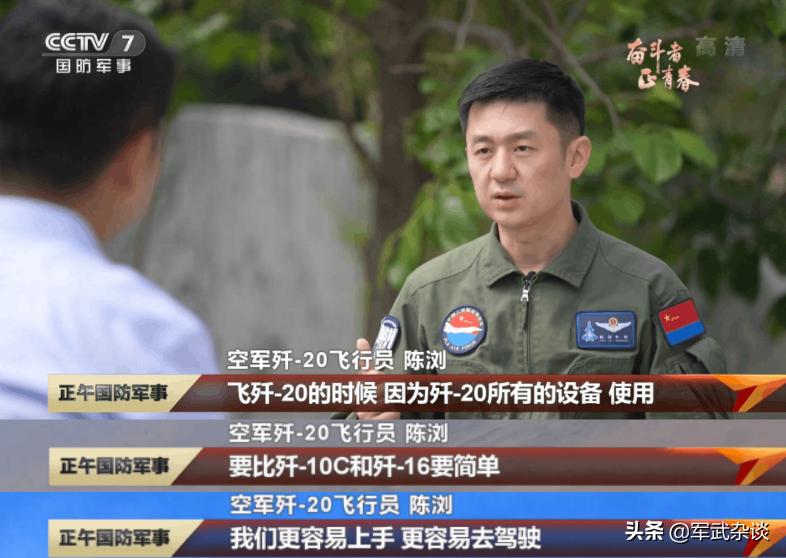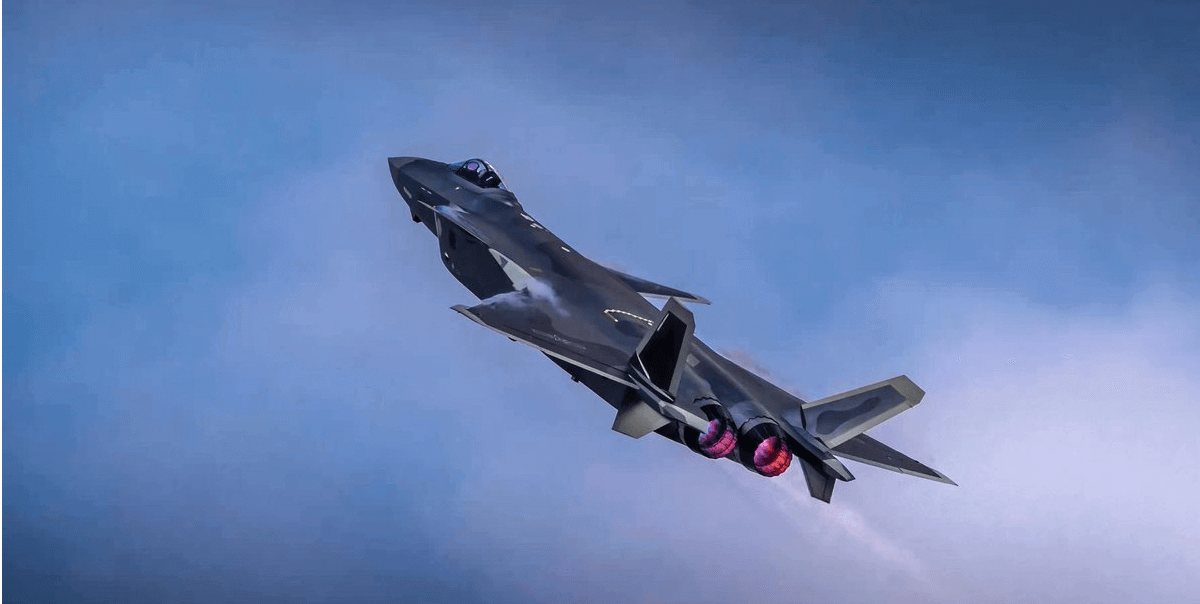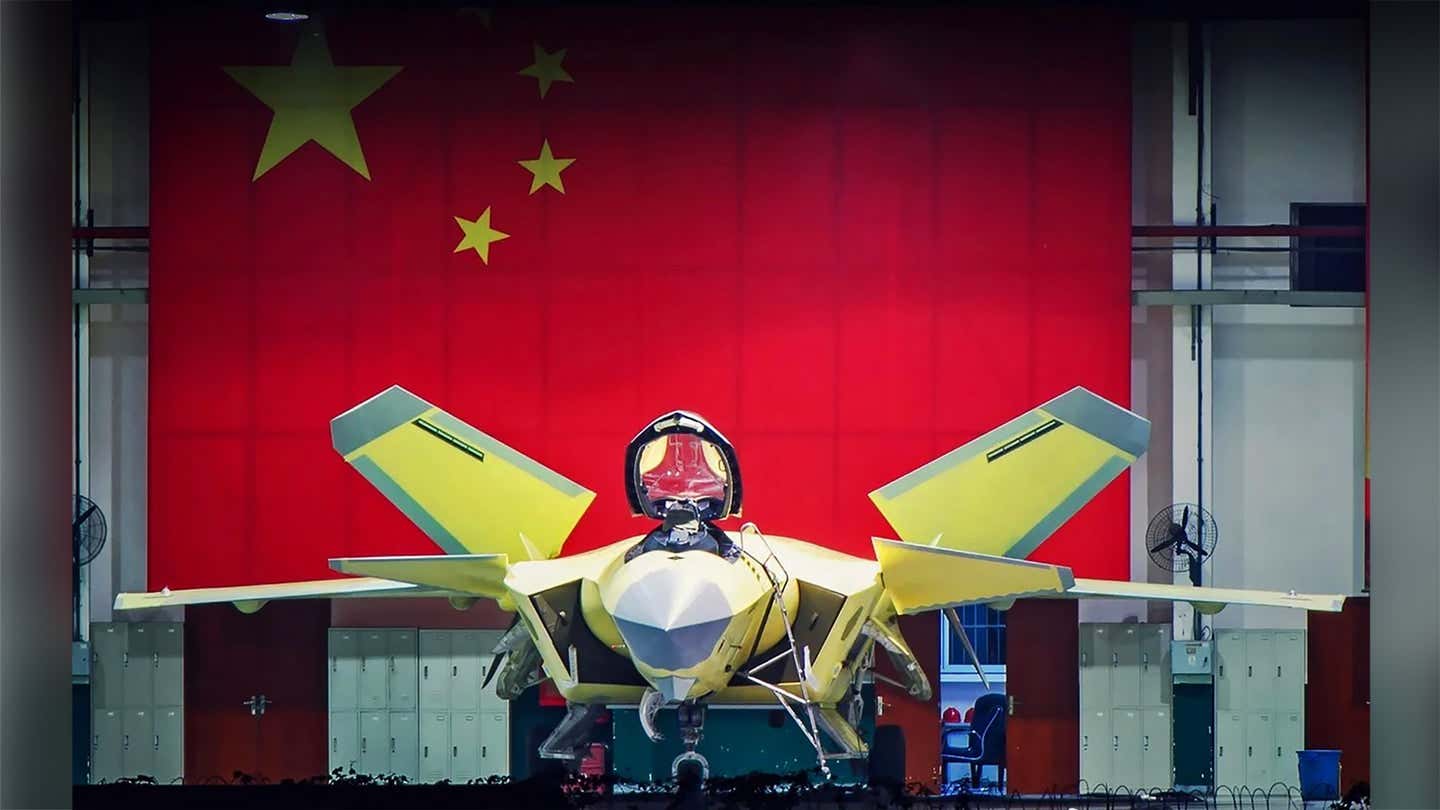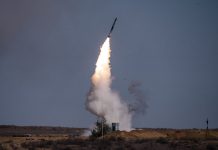While China keeps the information about its military strictly under wraps, the latest interview of a Chinese fighter pilot offers valuable insight into the PLA Air Force and its J-20 stealth fighter jet.
Chen Liu, a pilot of China’s fifth-generation J-20 fighter plane, was recently interviewed by CCTV, China’s state-run media. Chen is regarded as one of the PLA Air Force’s finest fighter pilots and also one of the few in China who has flown J-10, J-16, and J-20 fighter jets.
In a conversation with a reporter, the Chinese fighter pilot talked about the J-20 stealth fighter jet and his experience flying it. The J-20 fighter jet is China’s finest aircraft and is regularly compared to the US F-35 Lightning II and F-22 Raptor.
Chen stated that he only flew the single-seat J-10 and never the dual-seat type. The PLAAF adopted this approach, according to Chen, to iron out any issues that may occur when pilots first operate the J-20, which currently does not have a twin-seat variant.
He explains that the avionics of the J-20 fighter jet is much simpler to operate compared to J-10C and J-16 fighters. Chen further says that the J-20 fighter jet gathers a vast amount of data (something similar to the F-35), which is then processed before being relayed to the pilot.
Sophisticated Weapon System
While the Chinese fighter pilot stated that he had no problems when he first began flying the J-20, he mentioned that the aircraft is difficult to master because of its sophisticated weapon system.
The weapon system of the J-20 fighter is considerably different from that of fourth-generation fighters like the J-16 and J-10C.
It is common for stealth aircraft to conceal weaponry and fuel in internal compartments within the fuselage. The J-20 has three such bays. There are two for smaller air-to-air missiles and one for larger air-to-air, anti-ship, and air-to-ground missiles.

The massive internal weapons bay can now hold at least four long-range air-to-air missiles. The PL-15 serves as the aircraft’s long-range missile.
This missile has a range of approximately 200 kilometers and can reach speeds of up to Mach 4. External hardpoints have allowed the J-20 to carry four more missiles.
J-20: The Mighty Dragon
The J-20 is a single-seat, multirole stealth fighter aircraft built by China’s state-owned Chengdu Aircraft Industry Group (CAIG). This warplane was intended to carry out ground attack missions even in hostile environments.
The J-20’s front section looks a lot like the Lockheed Martin F-22 Raptor, while the rear section looks similar to the Russian Sukhoi T-50. However, the Chinese stealth fighter jet is larger than both of these aircraft.
The aircraft also has a low jet engine intake, a modern fly-by-wire (FBW) system, canard delta configuration, and diverterless supersonic inlet (DSI) alongside V-shaped tail and tail fins.
A bubble-shaped canopy on the J-20 encases a glass cockpit. Two liquid crystal displays (LCD) and a head-up display are installed in the cockpit. The aircraft can be controlled using the traditional HOTAS (hands-on throttle and stick) system.

Russian-made engines have been used to power Chinese jets. But, Beijing has long desired to develop its engine and attain greater flexibility, therefore avoiding the constraints imposed by Russian engines.
As previously reported by the EurAsian Times, the J-20 entered mass production after the Russian engine was replaced with a domestically made WS-10 last year.
Amid the heat-up in the Indo-Pacific, China had also deployed this stealth fighter jet for training missions in the South China Sea, allowing the advanced warplane to better secure China’s airspace security and maritime interests.
The People’s Liberation Army Air Force is also exploring manned-unmanned pairing with its J-20 fifth-generation stealth fighter jet, the Chinese government-backed Global Times newspaper reported earlier this year.

According to the Global Times, the loyal wingman concept could be effective in the twin-seat variant of the J-20 since a second crew member could manage the drones while the pilot flew the plane.
“Combat data from the second seat could be gathered, analyzed, and used to train artificial intelligence, which could eventually replace the second pilot,” the Global Times report added.
The J-20 might also become capable of autonomous flying, according to the report, and it could even undertake coordinated operations with drones in warfare by leading or directing a drone swarm.
It is unknown how sophisticated the PLA Air Force is with this type of technology. However, it would certainly be a force multiplier and a significant advantage as an offensive force.
- Contact the author at ashishmichel@gmail.com
- Follow EurAsian Times on Google News




